Papers by Pradeep Chaudhry

Arunachal Pradesh state of India has about twelve percent of its geographical area under protecte... more Arunachal Pradesh state of India has about twelve percent of its geographical area under protected area network against the national average of five percent. Pakke Tiger Reserve (PTR) forms an important portion of this network in the state. Tropical forest ecosystem of this reserve provides a continual flow of vital life supporting ecological, economic, social and cultural services at regional, national and global level. Economic valuation of these services can be used as a tool to estimate true value of natural capital contained therein and help in framing appropriate public policy emphasizing more investments in wildlife sector. An effort has been made in the present paper to make a conservative estimate of major ecosystem services emanating from this reserve. Annual flow benefits worth Rs 8.25 billion and stock worth Rs 144.30 billion make it a unique asset in the North East region of the country. Nature based tourism has immense potential in this reserve, which has not been explored yet fully to ensure livelihood and ecological security to the local communities.
Ecological Questions, Oct 15, 2019
doubt park authorities have done very well in management and growth of endangered species but now... more doubt park authorities have done very well in management and growth of endangered species but now new challenges have emerged. Improvements can only be done if we know about the list of problems. In the present article, we have discussed the various chal-ridor development activities etc. Significant successes and notable failures on the part of park administration have been discussed.
International Journal of Tropical Agriculture and Food Systems, Jan 29, 2009
Urban green spaces carry a number of non market or intangible benefits, which make a city healthy... more Urban green spaces carry a number of non market or intangible benefits, which make a city healthy and perfect place to live in. Recreation and aesthetic benefits are among such ecosystem services being generated by these resources. Unfortunately studies involving quantification and valuing these benefits are lacking in most of the developing countries including India. With the result, these assets are not given as much importance as they deserve in a city development plan. The article presents a brief summary of the research study carried out in Chandigarh city during 2002-04 for estimating recreational use value of city"s urban green spaces. The results can prove useful for urban policy makers, planners and academics including landscaping architects, foresters, ecologists and environmental economists.
Prosopis cineraria is a very significant tree of the Thar Desert of India, contributing to ecolog... more Prosopis cineraria is a very significant tree of the Thar Desert of India, contributing to ecological stability of the region and providing extensive support to human beings, livestock and the nutrient deficient soils. Since last one decade, problem of drying and mortality of this species has been noticed in some parts of the desert. Factors responsible for this drying phenomenon and research efforts undertaken by Arid Forest Research Institute, Jodhpur, India for various aspects related to the species has been discussed in the paper.
Chinese Journal of Urban and Environmental Studies, Mar 1, 2016
Urban greenery generates significant ecosystem services and contributes to improving environmenta... more Urban greenery generates significant ecosystem services and contributes to improving environmental quality, quality of life, and sustainable urban development. Research on various aspects of urban forestry such as carbon sequestration, removing air pollutants, reducing noise, providing recreational amenity benefits is in infancy stage in India. This paper reviews some significant studies in the field of air pollution removal by urban vegetation in developed and developing countries including India. Some issues related to development and research in the field of urban greenery and future management strategies to be adopted in India have been discussed in the paper.

International Journal of Society Systems Science, 2015
Sacred groves are traditionally managed as community forests in many parts of India, particularly... more Sacred groves are traditionally managed as community forests in many parts of India, particularly where indigenous communities live for centuries. These ecological assets form a significant part of the India's floral and faunal diversity. Arunachal Pradesh state of India is a homeland of various ethnic tribes. Most of the tribes have been protecting and conserving sacred groves based on their religious culture, beliefs, totem, taboos and festivals. This paper highlights current status of some of the significant sacred groves in four districts of Arunachal Pradesh state. Materialistic character of the present society, lack of values, virtues and spirituality among majority of the masses seem to be the major reasons for biodiversity degradation, especially in developing countries. The role of value education and spirituality in transforming attitudes of the people, particularly of younger generation, from materialism to spiritualism and to develop an attitude of love, pity and compassion towards living organisms and biodiversity has been stressed upon.
HAL (Le Centre pour la Communication Scientifique Directe), 2014
Ecological Questions, Nov 22, 2019
to protect the sinks and reservoirs of greenhouse gases, to increase forest plantations and to pr... more to protect the sinks and reservoirs of greenhouse gases, to increase forest plantations and to promote sustainable forest management. The present study compares the carbon sequestration potential of three-year-old Tectona grandis (teak) and Dendrocalamus strictus (bamboo) plantations in the state of Madhya Pradesh of India. It is concluded that D strictus sequesters more carbon than T. grandis and both species are suited for plantations in tropical areas of India. biomass carbon, corporate social responsibility, deforestation, climate change.
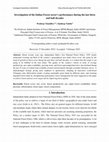
Ecological Questions
About seventy years ago, independent India’s first National Forest Policy, 1952 clearly mentioned... more About seventy years ago, independent India’s first National Forest Policy, 1952 clearly mentioned covering one-third of the country’s geographical area under forest cover, but going by the trend of growth in forest cover during the past three and half decades, it is evident that this target is not going to be fulfilled in the near future. The quality of the country’s forests in terms of average productivity, per capita availability, growing stock, and forest type/composition have also declined during the last 35 years as evident from available research articles/reports through secondary literature survey. A multi-pronged strategy giving more emphasis to agroforestry, adopting an innovative result-based Telangana state afforestation model, creating sustainable green funds by different states, and restoring degraded forest lands by strengthening participatory forest management has been suggested in the paper to achieve forest and tree cover target and for improving forest quality.
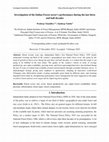
ECOLOGICAL QUESTIONS, 2023
About seventy years ago, independent India's first National Forest Policy, 1952 clearly mentioned... more About seventy years ago, independent India's first National Forest Policy, 1952 clearly mentioned covering one-third of the country's geographical area under forest cover, but going by the trend of growth in forest cover during the past three and half decades, it is evident that this target is not going to be fulfilled in the near future. The quality of the country's forests in terms of average productivity, per capita availability, growing stock, and forest type/composition have also declined during the last 35 years as evident from available research articles/reports through secondary literature survey. A multi-pronged strategy giving more emphasis to agroforestry, adopting an innovative result-based Telangana state afforestation model, creating sustainable green funds by different states, and restoring degraded forest lands by strengthening participatory forest management has been suggested in the paper to achieve forest and tree cover target and for improving forest quality.
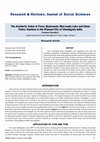
Ever increasing urban population, city congestions and busy life schedules, especially in develop... more Ever increasing urban population, city congestions and busy life schedules, especially in developing countries, are gradually pushing city residents towards urban parks, gardens and lake shores during their leisure hours and morning/evening strolls. Studies involving quantification and valuation of the recreational benefits provided by urban green amenities are lacking in most of the developing countries. This article presents a brief account of two research studies conducted in the planned city of Chandigarh, India during 2002-04 and 2012-13 respectively for assessing recreational benefits of city’s green assets and a clean water body in the form of a lake. The results of the study can be used by urban policy makers, planners, bureaucrats, civil society and others in planning and establishing parks/gardens/water bodies/tree patches or combination of these resources in newer cities which would be coming up in near future.
International Journal of Leisure and Tourism Marketing, 2011
Conserving biodiversity in urban areas of developing countries has become a big challenge. Urban ... more Conserving biodiversity in urban areas of developing countries has become a big challenge. Urban green spaces play a very important role in this direction. Governments in developing countries are recognising the need of increasing forest and tree cover in urban settings. Like other developing countries, India is also rapidly urbanising. Today every fourth Indian is a city-dweller and it is estimated that more than 40% of India's population will reside in urban areas by 2030. An attempt has been made in this paper to demonstrate the worth of ...

Hydro Nepal: Journal of Water, Energy and Environment, 2013
The Sukhna Lake of Chandigarh City is a man-made lake situated in the foothills of the Shivalik r... more The Sukhna Lake of Chandigarh City is a man-made lake situated in the foothills of the Shivalik range in the north-east corner of the city. This urban lake is one of the prime tourist places of the ‘City Beautiful’ and is mainly used for recreational purposes like boating, morning and evening strolls, exercises, food plaza and sightseeing. The catchment of the lake is mainly hilly and erosion prone, with the Sukhna wildlife sanctuary comprising a major portion of it. The water quality index of the lake water and its dependence on catchment characteristics has been studied. By using the National Sanitation Foundation Water Quality Index (NSFWQI) and Overall Index of Pollution (OIP), the results of the water quality assessment have found the lake water as having ‘good’ and ‘acceptable’ quality respectively based on past seven years’ data. During the last few years, construction activities in the catchment area have speeded up and a few invasive alien plant species have come up in the ...

Advances in Forestry Science
We analyzed phytosociological characteristics of a tropical dry deciduous forest located in an ur... more We analyzed phytosociological characteristics of a tropical dry deciduous forest located in an urban environment of Indian Institute of Forest Management (IIFM) Campus in the capital city of Bhopal of Madhya Pradesh state, Central India. A Comparison has been made among the tree community characteristics during the years 1988, 2002 and 2020 in terms of tree species composition, stem density, basal area and Importance Value Index (IVI). At the time of establishment of the institute in 1988, the forest area resembleda degraded dry scrubland. Due to continuous care/protection, plantation activities, degraded forest recovered remarkably, ecological processes evolved favorably with canopy cover reaching over 60% in some patches and about 50% in general over most part of the campus. During last two decades, tree density increased from 319 to 525 stem ha-1 indicating an increase of 64% whereas basal area increased from 18470.79 cm2 ha-1 to 29782.31 cm2 ha-1,an increase of about 61%. Legumi...
Asian Journal of Conservation Biology
Madhya Pradesh is a wildlife tourism destination in India. However, some Protected Areas are not ... more Madhya Pradesh is a wildlife tourism destination in India. However, some Protected Areas are not developed, and their importance is not well-known. Weak management practices and low motivating factors for staff, lack of ownership among the communities were some of the restricting factors why they have not been able to develop to their full potential. In order to support their development, organizations having corporate social responsibility (CSR) funds were identified from various districts of Madhya Pradesh viz. Indore, Dhar, Satna, Katni, Singrauli and Dewas. The primary objective of this study is to throw light on their potential, to generate awareness about their potential and how they can be promoted to boost ecotourism with the help of all concerned stakeholders’ participation.
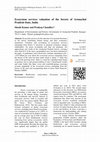
Brazilian Journal of Biological Sciences, 2015
Ecosystem services are the outcome of ecosystem functions of the forests benefitting human beings... more Ecosystem services are the outcome of ecosystem functions of the forests benefitting human beings and their economies immensely. Valuation and accounting of ecosystem services emanating from forests is necessary to generate awareness among stakeholders, for green accounting and land use planning. An approximate real worth of the Arunachal Pradesh forests, covering more than 81% of the state's geographical area, has been estimated in the paper. A preliminary and conservative estimate amounting to Rs. 1,518 billion per year about the ecosystem services emanating from the forests of the state has been made which is about 1.7 times the value of the growing stock. There is a need for a detailed study based on primary survey and ground truthing of state's floral/faunal wealth and water bodies like lakes, rivers and waterfalls/springs assessing accurate magnitude of the ecosystem services emanating from the forests of the state and incorporating them in Gross State Domestic Product...
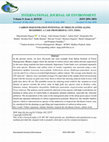
International Journal of Environment
In the present article, we have discussed one such example from Indian Institute of Forest Manage... more In the present article, we have discussed one such example from Indian Institute of Forest Management, Bhopal campus where the amount of carbon stored, and carbon dioxide sequestered by the trees along roadside has been estimated. Importance Value Index was calculated separately for each species. Biomass and carbon stock of woody vegetation was assessed using a non-destructive method. Leucaena leucocephala, Schleichera oleosa, Dalbergia paniculata, Acacia catechu and Ficus religiosa recorded high biomass carbon content. The average stem density was 295 stems ha-1. Species-wise calculated average CO2 equivalent in the sample observed increasing trend with the increase in girth class from 20cm to 60cm but showing reduced trend in trees with girth class above 60 cm. The probable reason for reducing trend could be the variation in wood density of species towards the lower value of high girth size species such as Bombax ceiba, Samanea saman, Holoptelea integrifolia, Dalbergia paniculata,...

Animal Biodiversity and Conservation
People and protected areas: some issues from India. India is one of the 17 mega biodiverse countr... more People and protected areas: some issues from India. India is one of the 17 mega biodiverse countries, occupying only 2.5 % of the world's geographical area and 1.8 % of the its forest area but supporting 16 % of the world's human population and 17 % of its livestock population. Biotic pressure on the country's protected areas is tremendous and managers of these areas face an uphill task in balancing divergent needs of different stakeholders of national parks and wildlife sanctuaries. The job of managing such areas is highly challenging because of the many difficult issues such as human-wildlife conflicts, encroachments, overgrazing, tourists' pressure (including pilgrimages into the forests), poaching, and an ever-increasing demand for diversion of protected areasfor development purposes. In the present article we discuss some of these issues with reference to India and emphasise the danger of losing ecosystem services (mostly of an intangible or regulating kind of nature) emanating out of these protected areas.
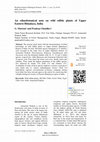
Brazilian Journal of Biological Sciences, 2016
The present article deals with the documentation of tribal knowledge on wild edible plants in Upp... more The present article deals with the documentation of tribal knowledge on wild edible plants in Upper Eastern Himalayan Region of India. In total, 269 plant species belonging to 77 families were recorded in the study area of Upper Subansiri District of Arunachal Pradesh. Dioscoreaceae, Rutaceae, Cucurbitaceae and Arecaceae were the dominant families with 16, 13, 12 and 11 plant species, respectively, while Moraceae and Asteraceae followed with 10 species each. Four major life forms were trees, shrubs, herbs and climbers. Trees made the highest proportion of the edible species (81) followed by shrubs (74), herbs (71) and climbers (37). Availability of some of these species might be a serious constraint in near future due to various anthropogenic factors. Need for undertaking vigorous environmental awareness campaign among local tribes has been stressed upon in the article for conserving this valuable biological resource of Eastern Himalayan region of India.
Brazilian Journal of Biological Sciences, 2016
Urban greenery generates many tangible and intangible benefits and contributes to improving envir... more Urban greenery generates many tangible and intangible benefits and contributes to improving environmental quality, quality of life and sustainable urban development. Research on various aspects of urban vegetation such as carbon sequestration, removing air pollutants, reducing noise, providing recreational amenity benefits is in infancy stage in India. This paper reviews few significant studies in different spheres of urban greenery from Indian cities. Some issues related to development and research in this direction and future management strategies to be adopted have been discussed.










Uploads
Papers by Pradeep Chaudhry